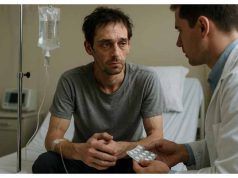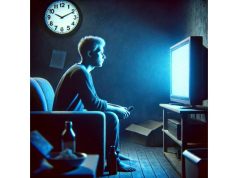
Running fingers through your hair should feel soothing, yet for roughly 1–2 % of people it can trigger an almost magnetic urge to tug, yank, and pluck until bald patches appear. This impulse-control condition—known medically as trichotillomania—sits at the crossroads of habit, anxiety relief, and compulsion. Sufferers often hide the behavior beneath hats, false lashes, or strategic lighting, battling deep shame while longing to stop. This guide unpacks the science behind hair-pulling disorder, the personal stories echoed in clinics worldwide, and the concrete, evidence-backed steps that guide real-life recovery.
Table of Contents
- Understanding the Disorder and How Widespread It Is
- Underlying Drivers and Who Is Most at Risk
- Recognizing Patterns, Behaviors, Symptoms, and Diagnostic Steps
- Ripple Effects on Health, Mind, and Social Life
- Evidence-Based Paths to Healing and Long-Term Support
- Frequently Asked Questions
Understanding the Disorder and How Widespread It Is
Trichotillomania (pronounced trick-oh-till-oh-MAY-nee-uh) is classified in the DSM-5 under “Obsessive-Compulsive and Related Disorders.” People with the condition repetitively pull out hair from scalp, eyebrows, eyelashes, beard, or other areas, often experiencing mounting tension beforehand and a brief sense of relief—or even gratification—afterward. Some report entering a trance-like “pulling zone,” losing track of time until surrounded by strands on a desk, pillow, or car dashboard.
Global Snapshot
- Prevalence: Lifetime rates hover between 1 % and 3 % of the general population; however, many cases go unreported due to embarrassment, meaning true numbers may be higher.
- Gender ratio: In childhood, boys and girls are affected equally, but by adulthood females outnumber males about 4 : 1 in clinical samples—possibly a gap in help-seeking rather than incidence.
- Age of onset: Peaks between ages 9 and 13, coinciding with school stress, puberty, and heightened body awareness. A second spike sometimes appears in late teens or early twenties, particularly around college transitions.
- Body-focused repetitive behavior (BFRB) family: Trichotillomania often co-occurs with dermatillomania (skin picking) and onychophagia (nail biting), reflecting shared neural circuitry.
Cultural and Historical Context
Hair-pulling rituals appear in ancient texts—from grief tearing in the Bible to anxiety coping described in medieval poetry. Modern internet forums now connect sufferers across continents, transforming what once felt like a lonely quirk into a recognized medical condition worthy of compassionate treatment.
Key takeaway: Trichotillomania is neither rare nor a simple “bad habit.” It is a diagnosable mental-health disorder found across ages, cultures, and backgrounds.
Underlying Drivers and Who Is Most at Risk
The roots of hair-pulling disorder are complex—braiding genetics, brain chemistry, emotional regulation, and environmental triggers.
Neurobiological Foundations
- Cortico-striato-thalamo-cortical (CSTC) loop dysregulation
Imaging studies reveal hyperactivity in the anterior cingulate cortex (ACC) and nucleus accumbens—regions controlling habit formation and reward. Hair pulling may temporarily dampen this overactivity, creating a self-reinforcing cycle. - Dopamine and glutamate balance
Pulling releases dopamine, yielding momentary pleasure. Excess glutamate transmission can elevate tension beforehand, nudging the urge. - Serotonin signaling
Although less central than in classic OCD, serotonin plays a modulatory role—explaining why SSRIs help a subset of patients.
Genetic Susceptibility
- Heritability estimates climb as high as 50 %. Twin studies find concordance rates significantly above chance.
- SAPAP3 and SLITRK1 gene variants—also implicated in OCD and Tourette’s—appear more often in trichotillomania cohorts.
Psychological and Emotional Factors
| Driver | Typical Presentation | Impact on Pulling |
|---|---|---|
| Stress and anxiety | School exams, work deadlines, family conflict | Hair pulling functions as tension relief |
| Perfectionism | Noticing a “coarse” or “out-of-place” strand | Urge to remove imperfections escalates |
| Boredom/dissociation | Mindless scrolling, watching TV | Pulling becomes automatic fidget |
| Sensory sensitivity | Pleasure from root texture or popping sound | Reinforces tactile reward |
Environmental and Social Triggers
- Mirror proximity: Bathrooms and makeup stations provoke inspection and subsequent pulling.
- Bedtime routines: Many experience nightly episodes while reading or trying to fall asleep.
- Academic pressure: Perfectionistic school cultures correlate with earlier onset.
- Bullying or trauma: Hair pulling can surface as self-soothing when external safety feels threatened.
High-Risk Populations
- Children with ADHD or autism spectrum traits—seeking sensory input.
- Teens navigating body-image shifts—hair becomes a focal control point.
- Adults with high-stakes careers—intense cognitive load pairs with sedentary desk time.
- Individuals with a first-degree relative with OCD, tic disorders, or BFRBs.
Action insight: Map your personal triggers in a journal—rating stress, boredom, and environment every time you notice an urge. Patterns often reveal modifiable roots.
Recognizing Patterns, Behaviors, Symptoms, and Diagnostic Steps
Shame and secrecy cloak trichotillomania; many sufferers become masters of disguise—combing hair forward, applying brow pencils, or wearing false lashes. Spotting the disorder early prevents years of hidden distress.
Common Pulling Styles
- Focused pulling: Conscious, deliberate removal of specific hairs to relieve tension or achieve “just right” feeling.
- Automatic pulling: Semi-conscious fiddling, often during sedentary tasks like studying, driving, or scrolling social media.
- Mixed pattern: Switching between focused and automatic across the day.
Behavioral and Physical Red Flags
- Repeated hair removal leading to noticeable thinning—patches, widened part, or missing lashes/brows.
- Failed attempts to stop despite sincere resolutions.
- Mounting tension before pulling and relief afterward (though some report numbness instead of tension).
- Time sink: Minutes to hours lost daily in search of “perfect” hairs.
- Hair-related rituals: Rolling strands between fingers, biting roots (trichophagia), hoarding pulled hairs in piles or jars.
Emotional Co-Symptoms
- Guilt, embarrassment, or self-loathing following episodes.
- Anxiety or irritability when prevented from pulling (e.g., wearing mittens).
- Depressive moods fueled by appearance concerns.
Self-Screening Questions
- Do you find hair strands around your workspace or bed without remembering pulling?
- Have you worn hats, scarves, or false eyelashes to hide bald areas?
- Does the urge intensify during stress, boredom, or relaxation?
- Have you experienced digestive discomfort (possible trichobezoar) after chewing or swallowing hair?
- Does pulling interfere with work, school, or social plans?
“Yes” to two or more warrants professional assessment.
Diagnostic Process
| Step | What Happens | Purpose |
|---|---|---|
| Clinical interview | Psychiatrist/psychologist explores history, triggers, co-morbidities | Match DSM-5 criteria |
| Dermatologic exam | Checks for alopecia areata, fungal infections | Rule out medical mimics |
| Psychometric scales | Massachusetts General Hospital Hairpulling Scale, TLC Foundation Severity Chart | Baseline severity |
| Family input | Parent or partner observations | Validate episode frequency |
| Laboratory tests (rare) | Ferritin, thyroid panel if diffuse hair loss | Identify contributing medical factors |
Pro tip: Bring photos of hair loss progression and a week-long trigger diary to your first appointment—this speeds accurate diagnosis.
Ripple Effects on Health, Mind, and Social Life
Trichotillomania lives primarily on the skin’s surface, yet its consequences seep far deeper—affecting bodies, psyches, wallets, and relationships.
Physical Complications
- Infection and irritation – Repeated pulling traumatizes follicles, causing folliculitis, scabbing, and potential scarring alopecia.
- Permanent hair loss – Long-term damage can destroy follicles, leading to irreversible bald spots.
- Trichobezoars – Ingested hair may form stomach/intestinal masses requiring surgical removal (Rapunzel Syndrome).
- Musculoskeletal strain – Hours of arm elevation and pinching motions lead to neck pain, carpal tunnel, or tendinitis.
Psychological Toll
| Domain | Manifestation | Downstream Effect |
|---|---|---|
| Self-esteem | Feeling “ugly” or “broken” | Social withdrawal, dating avoidance |
| Anxiety | Fear of being “found out” | Constant mirror checks, makeup rituals |
| Depression | Hopelessness about stopping | Missed school/work, oversleeping |
| Perfectionism cycle | Pull to fix “imperfect” hairs → regret → heightened perfectionism | Escalates severity |
Social and Occupational Impact
- School bullying: Visible bald patches invite teasing; kids may skip gym or swimming to hide.
- Workplace stress: Avoiding presentations or camera-on video meetings; spending break times in restrooms pulling.
- Financial strain: Costly hairpieces, lash extensions, dermatology visits, cosmetic products.
- Relationships: Partners misinterpret secretive bathroom time as avoidance; intimacy may suffer if individual refuses to remove hats or wigs.
Quality-of-Life Metrics
Research shows trichotillomania scores on par with moderate-to-severe psoriasis or chronic migraine for daily impairment—highlighting the need for medical attention equal to other visible disorders.
Encouraging note: Regrowth often begins within three months of abstaining from tugging, provided follicles remain intact. Early intervention preserves hair potential and eases emotional healing.
Evidence-Based Paths to Healing and Long-Term Support
There is no one-size cure, yet decades of research offer a toolbox—behavioral therapies, medications, lifestyle tweaks, and community support—to craft personalized recovery.
1. Front-Line Behavioral Therapies
| Approach | Core Technique | Ideal Candidate |
|---|---|---|
| Habit Reversal Training (HRT) | Awareness training → competing response (e.g., clenching fists) → motivation building | Most individuals; gold standard |
| Comprehensive Behavioral (ComB) Model | Analyzes five modalities—sensory, cognitive, affective, motoric, environmental—to tailor strategies | Complex trigger patterns |
| Acceptance and Commitment Therapy (ACT) | Mindfulness + values-guided actions; reduces urge-fighting struggle | Those with high anxiety about urges |
| Dialectical Behavior Therapy (DBT) skills | Distress tolerance, emotion regulation | Co-occurring self-harm or BPD traits |
Therapy tip: Record “urges out of 10” before and after competing responses; watching scores fall reinforces skill use.
2. Pharmacologic Adjuncts
| Medication | Rationale | Evidence Strength | Monitoring |
|---|---|---|---|
| N-acetylcysteine (NAC) | Modulates glutamate in CSTC loop | Moderate (2 randomized trials) | 1200–2400 mg/day; GI upset possible |
| Olanzapine | Dopamine/serotonin blockade | Limited but positive | Metabolic labs quarterly |
| SSRIs (fluoxetine, sertraline) | Anxiety/depression comorbidity | Mixed | Watch activation in teens |
| Clomipramine | Tricyclic with strong serotonin action | Historic support | EKG, anticholinergic side effects |
| Topiramate | Glutamate and GABA modulation | Case reports | Cognitive dulling, kidney stones |
Medication works best with behavioral therapy; pills alone rarely deliver lasting change.
3. Technology-Assisted Tools
- Smart bracelets (Keen, Pavlok) vibrate when hands approach target zones, boosting awareness.
- Habit-tracking apps log episodes, export graphs for therapist review.
- Virtual reality exposure under research to practice urge delay in simulated triggering environments.
4. Cosmetic and Protective Supports
- Barrier methods: Finger gloves, bandages, hair-taming gels keep strands less accessible.
- Dermatologic camouflage: Scalp micropigmentation, brow microblading, medical-grade wigs bolster confidence during regrowth.
- Lash serums and scalp topicals: Biotin-rich formulas may speed visible recovery (though evidence is anecdotal).
5. Lifestyle Anchors
| Domain | Practical Swap | Why It Helps |
|---|---|---|
| Sensory | Fidget cubes, worry stones, knitting | Provides tactile input |
| Stress | 10-minute yoga flow, paced breathing apps | Lowers baseline tension |
| Sleep | Satin caps, dim phone screen, ASMR audio | Reduces bedtime pulling |
| Nutrition | Omega-3, iron-rich foods (spinach, lentils) | Support hair health and mood |
6. Social and Community Resources
- TLC Foundation for BFRBs: Annual conferences, therapist directory, peer chat rooms.
- Online support groups: Reddit r/trichotillomania, Discord servers for daily accountability.
- Family training: Parents learn to respond with empathy over scolding, using reward charts and calm language.
7. Relapse Prevention Roadmap
- Trigger forecast: Each Sunday, anticipate stressful events; pack fidget tools accordingly.
- Early-warning radar: Note subtle cues—fidgety fingers, scalp tingles—before full urge escalates.
- Recovery rituals: If pulling occurs, shift to self-compassion checklist: pause, breathe, log, apply scalp conditioner, move on—curbing shame spiral.
- Quarterly tune-ups: Even after remission, schedule booster therapy sessions to reinforce skills.
Hope spotlight: Longitudinal studies show 60–80 % of treated individuals report significant reductions in pulling severity, with many achieving months-long or years-long remission.
Frequently Asked Questions
Is trichotillomania the same as OCD?
They share overlapping circuits, but trichotillomania is classified separately. OCD compulsions aim to neutralize intrusive fears, while hair pulling often pursues sensory relief or gratification without specific catastrophic thoughts.
Will my hair grow back after I stop pulling?
If follicles remain intact, regrowth typically begins within three months. Long-standing pulling can scar follicles, slowing or preventing return—early intervention maximizes recovery.
Does shaving my head help me quit?
It can break the immediate cycle by removing accessible strands, but underlying urges may shift to eyebrows or body hair. Combine shaving with therapy for sustainable change.
Are there vitamins that cure trichotillomania?
No supplement alone eliminates the disorder. However, balanced nutrition supports hair regrowth and mood stability, complementing behavioral treatment.
Can children outgrow hair pulling?
Some youngsters do stop spontaneously, yet many continue into adulthood if untreated. Early child-friendly interventions like playful HRT boost odds of remission.
Is trichotillomania caused by childhood trauma?
Trauma can act as a trigger or worsening factor, but many sufferers report no major trauma. Genetics, temperament, and habit learning all contribute.
Disclaimer
This article is for educational purposes only and does not replace professional medical advice. If you or someone you know struggles with hair pulling, consult a qualified mental-health or dermatology professional for personalized assessment and treatment.
If this guide helped you, please share it on Facebook, X (formerly Twitter), or any favorite platform, and follow us for more compassionate, evidence-based mental-health content. Your support empowers us to keep creating high-quality resources—thank you!










